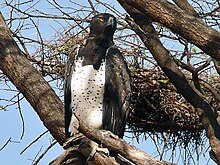AP Science Writer
OCTOBER 23, 2017 8:34 AM
WASHINGTON
Hope is the thing with feathers,
poet Emily Dickinson wrote. For Richard Thorns, the feathers are pink.
Thorns' hope? To prove that a
colorful duck is not extinct. This week, he launches a seventh expedition into
the inaccessible wilds of Myanmar to search for the pink-headed duck that
hasn't been seen alive since 1949, and that was in India. No one has seen the
bird alive in Myanmar in more than a century.
Thorns, a British writer who quit
his shop clerk job 20 years ago after reading about the pink-headed duck in the
book "Vanishing Birds," has spent $20,000 of his own money on
previous fruitless trips. His birder brother called him mad.
"I could have had a lot of
nice things," the 53-year-old said. "I don't want nice things. I want
to see a pink-headed duck."
This time, he is backed by the
Global Wildlife Conservation group, which launched a hunt for "lost
species " — 25 quirky and elusive plants and animals beginning with the
duck. A sports optic company and cheesemaking company are also helping pay.
Thorns and three others plan to
head to the wetlands north of the vast Indawgyi Lake during the rainy season
where they believe they have a better chance of spotting the duck. And Thorn
thinks he has a secret weapon: elephants.
He used canoes in the past and
thinks he probably spooked the shy birds. Now he plans to bring elephants
stomping through the wetlands.
"Clearly a bird isn't going
to hunker down if there are 2-ton elephants," said Thorn.
As crazy as it may seem, Thorns
may be onto something, said ornithologist Kevin McGowan at Cornell University
who isn't part of the expedition.
"Fairly regularly birds get
rediscovered," says McGowan, who has gone on unsuccessful expeditions for
the ivory-billed woodpecker. "We don't see all the world that is in front
of our eyes."


